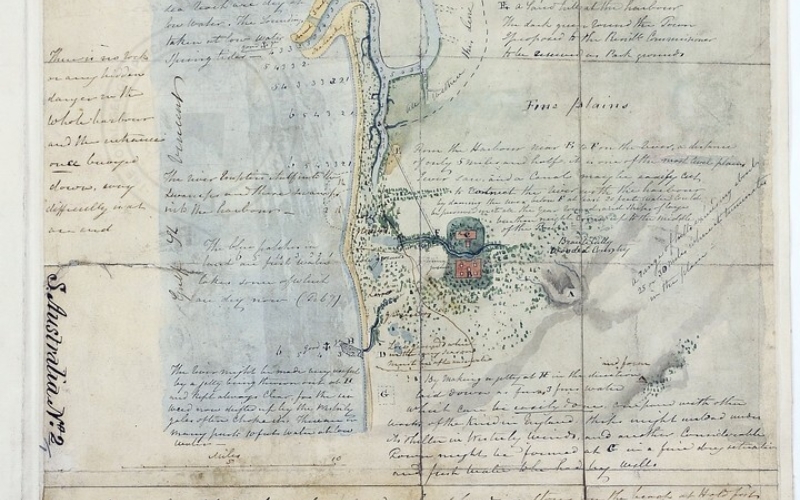
Monthly Lecture
Mapping early encounters of colonists with Aboriginal people
Dr Skye Krichauff
Skye Krichauff will draw on maps and other historical documents to illustrate the types of country that was most sought after by colonists and to discuss the failure of early-colonial government officials to recognise Aboriginal people’s proprietary rights.
Image from David Collin's account of the colony of NSW, 1798
The unique legal foundations and the timing of the establishment of the province of South Australia led to the recognition of Aboriginal people’s proprietary rights to land being recognised in the colony’s founding documents. However, while this may appear enlightened in principle, in practice the search for suitable land for settlement began as soon as Colonel Light’s survey team disembarked on the South Australian mainland, and land surveys took place in advance of any genuine communication with the local people. Maps are a crucial source through which to learn when and where the surveys took place and hence to evaluate the initial impact of colonialism on diverse Aboriginal groups. In this presentation, Skye Krichauff draws on maps and other historical documents to illustrate the types of country that was most sought after by colonists and to discuss the failure of early-colonial government officials to recognise Aboriginal people’s proprietary rights.
Skye Krichauff is an ethno-historian who combines the methodologies of history, anthropology and oral history. She is interested in colonial cross-cultural relations, the relationship between history and memory, and how societies live with historical injustices (in particular how Australians live with the enduring legacies of colonialism). She is a senior lecturer at the University of Adelaide.
Date and Time
19 June 2025 | 5:30 pm
Location
Heztel Lecture Theatre, Institute Building, North Terrace AdelaideCost
Members: $5 Non members: $10
Light refreshments available from 5:00 pm.